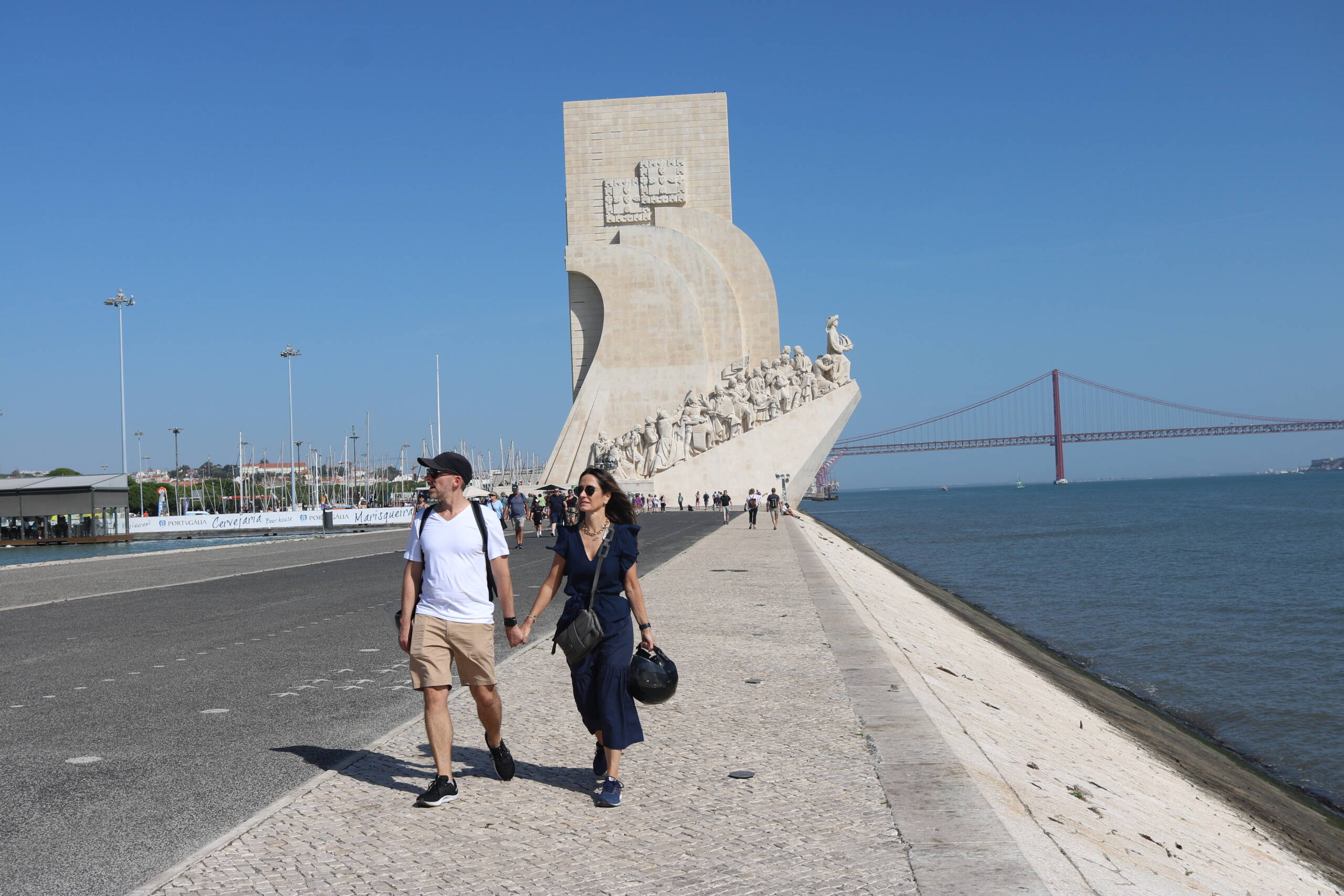There’s a particular stretch along the Tagus River where Lisbon seems to open its chest wide, showing both its past and its pulse. In this photo, you see it clearly: the Padrão dos Descobrimentos—the Monument to the Discoveries—standing proud and pale against the deep blue sky, like the prow of a ship forever pointed toward the horizon. Figures carved in stone lean forward as though carried by the wind, frozen in the act of discovery. They’re explorers, navigators, dreamers who once pushed the boundaries of the known world from this very port. Just behind it, like a line drawn across the sky, rises the red span of the 25 de Abril Bridge, Lisbon’s iconic connection over the river, often likened to San Francisco’s Golden Gate.

On this sun-washed day, the whole scene breathes a mix of grandeur and leisure. Tourists wander the promenade, some with cameras, some just walking hand-in-hand like the couple in the foreground—him in a white T-shirt and shorts, her in a flowing navy dress carrying a motorbike helmet. They’re not rushing anywhere, just strolling, and maybe that’s the best way to experience Lisbon: slowly, deliberately, soaking in the contrasts between monumental history and casual present. The cobblestone walkway beneath their feet carries the imprint of countless visitors, yet each step feels personal, like writing a little footnote in Lisbon’s never-ending story.
What makes this place special is not just its postcard beauty, but the way it frames the essence of the city. To one side, the river—broad, calm, shimmering—always pointing outward, a reminder of Portugal’s seafaring soul. To the other, the marina with its quiet forest of masts, hinting at a more intimate kind of sailing life that continues today. And ahead, that sculpted monument that whispers of ambition, risk, and voyages into the unknown. It’s history you can literally walk beside, and it has a way of humbling you, even as you’re simply enjoying the sun on your face.
Lisbon has many corners where past and present overlap, but here, on this wide riverside path, the balance feels almost perfect. You can come to admire the scale of the monuments, or to simply stretch your legs, or to catch that particular light in the afternoon when the bridge glows red against the fading sky. No matter your reason, the result is the same: you leave with a sense that Lisbon is not only about hills and trams and tiled façades—it’s about this eternal dialogue between water and stone, between journeys taken and those still waiting to begin.
Leave a Reply